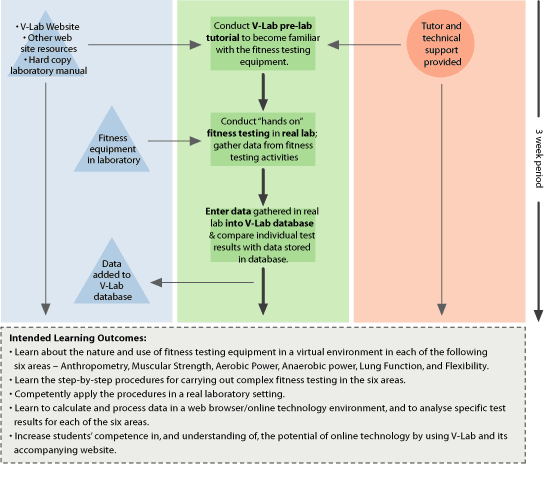|
ACCESSIBLE RESOURCES
- Access over a three week period to virtual laboratory
(V-Lab) through dynamic online database to learn and practise
procedures.
- Other website resources providing extended content and
administrative information available throughout semester.
- Print resources: Students are provided with a printed
laboratory manual which contains a section to assist them
record and process V-Lab data collected in laboratory sessions.
- Access to real fitness equipment for fitness testing.
- Face-to-face classes throughout the semester for discursive
activities.
RESOURCES IN CONTEXT
V-Lab, print manual, face-to-face classes, and real laboratory
work are all significant resources. Extra resources provided
on the website are less significant, but provide other learning
options for students.
V-Lab prrovides for the standardisation of test instructions
and assists students in often complex manipulation of test
data.
VARYING THE RESOURCE SET
All resources (web environment, print manuals, and face-to-face
sessions) are critical to the overall success of implementing
V-Lab.
|
